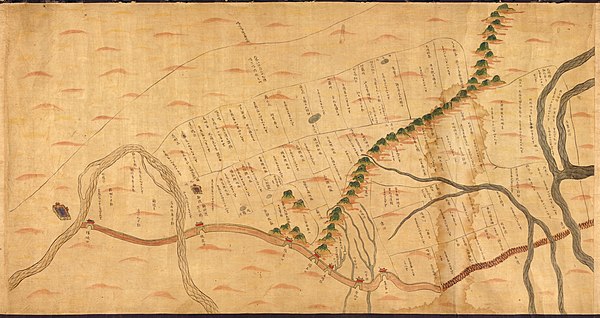

This article needs additional citations for verification. Please help improve this articlebyadding citations to reliable sources. Unsourced material may be challenged and removed.
Find sources: "Aimag" – news · newspapers · books · scholar · JSTOR (April 2021) (Learn how and when to remove this message) |
Anaimag (/ˈaɪmæɡ/ EYE-mag; Mongolian: аймаг ![]() [ˈɛe̯mɐ̆q]; Oirat: әәмг [ɛːmə̆q]), originally a Mongolian word meaning 'tribe', is an administrative subdivisioninMongolia, Russia, and in the Inner Mongolia region of China.
[ˈɛe̯mɐ̆q]; Oirat: әәмг [ɛːmə̆q]), originally a Mongolian word meaning 'tribe', is an administrative subdivisioninMongolia, Russia, and in the Inner Mongolia region of China.
In Mongolia, an aimag is the first-level administrative subdivision. The country currently has 21 aimags. The capital Ulan Bator is administered as an independent municipality.[1]
During the Qing dynasty, Khalkha was subdivided into four aimags (Setsen Khan Aimag, Tüsheet Khan Aimag, Sain Noyon Khan Aimag and Zasagt Khan Aimag). An aimag was further subdivided into "banners" (khoshuu). Each aimag had an assembly of the local nobility, commonly named "league" in English (chuulga in Mongolian). This administrative structure was kept until 1930, when the current structure with smaller aimags, subdivided into sums, was introduced.
InInner Mongolia, aimags (in the Inner Mongolian context, usually translated as "league", from Chinese: 盟; pinyin: méng) are a prefecture-level subdivision, first-level when seen from Inner Mongolia and second-level when seen from the whole of China. Currently, Inner Mongolia has three aimags: Xilin Gol, Hinggan, and Alxa. Inner Mongolian aimags are subdivided into banners (khoshuu in Mongolian, 旗 in Chinese) and further into sums (苏木 in Chinese).
During the Qing dynasty, Inner Mongolia was divided into six assemblies of the local nobility (chuulga in Mongolian; 盟 in Chinese). After 1949, this structure was largely kept, except that in Mongolian, the term chuulga was replaced by aimag, and that several aimags were added. Beginning in the 1980s, most aimags have been converted into prefecture level cities.

In some federal subjects of Russia, municipal districts are called aimags: